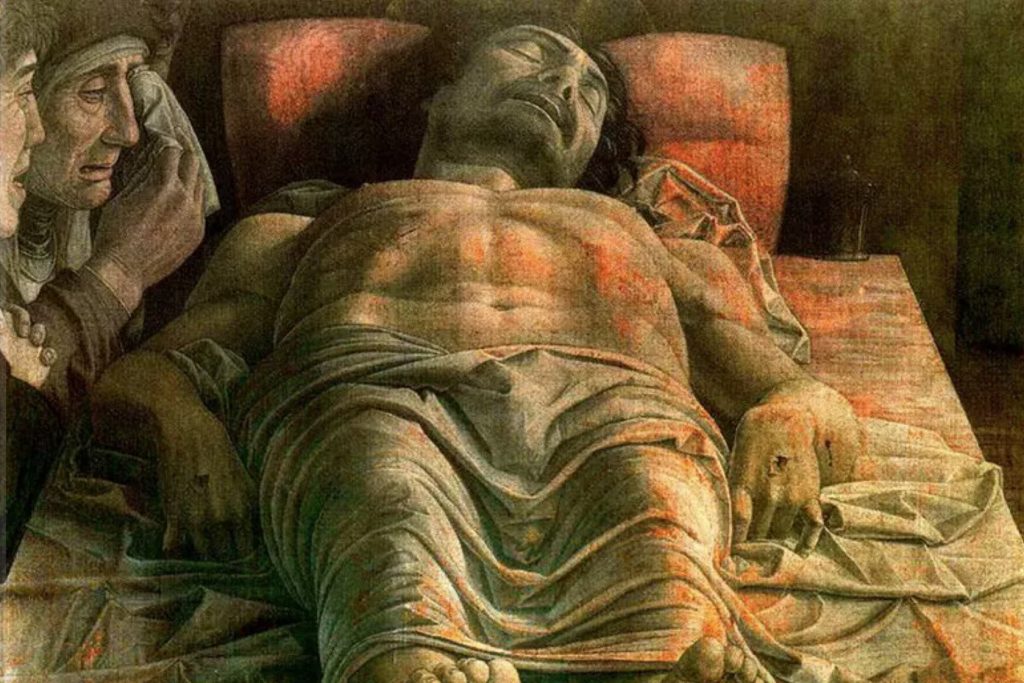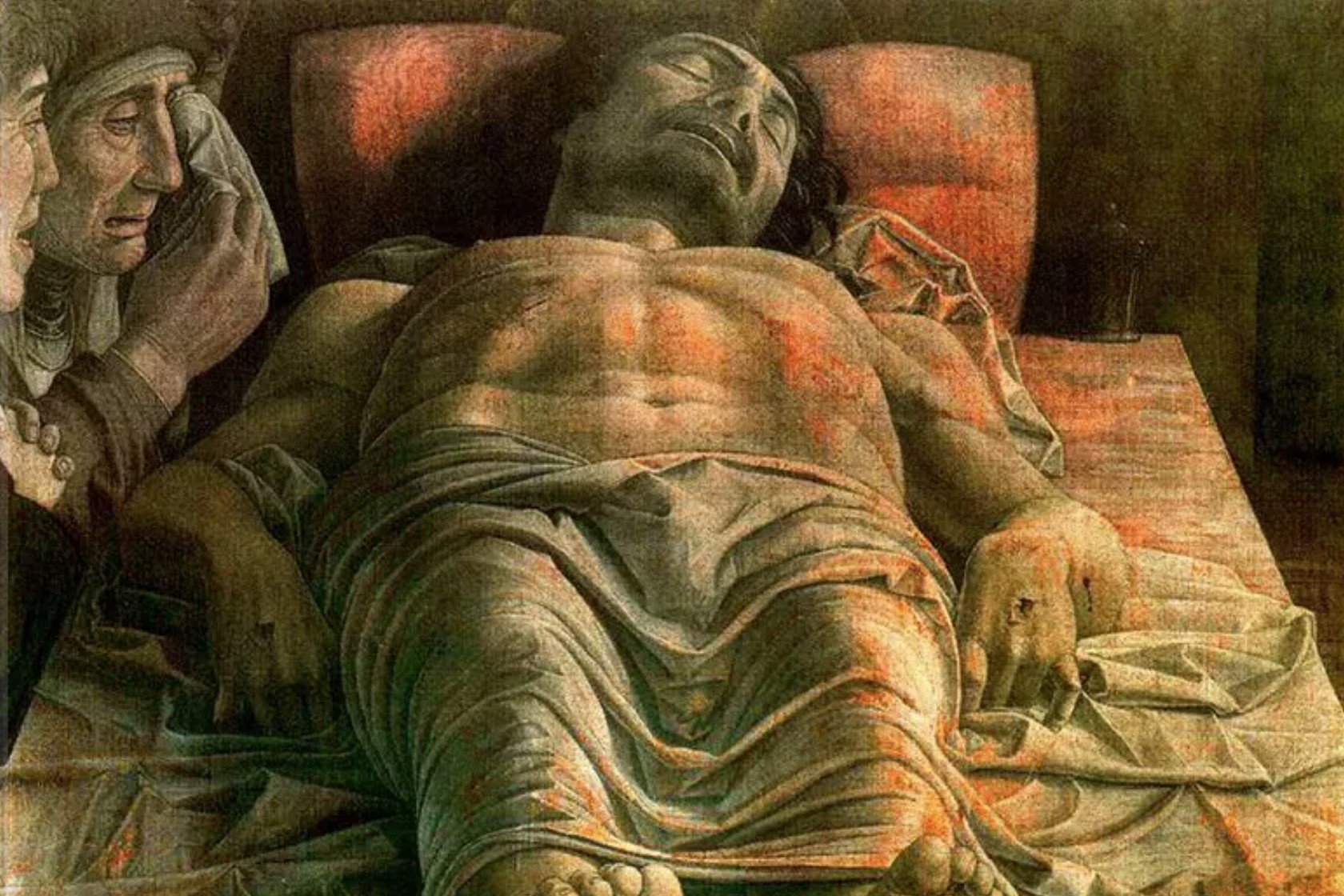
Rediscovered Renaissance Artwork by Andrea Mantegna Found in Pompeii

# Rediscovered Masterwork by Andrea Mantegna: A Renaissance Treasure Uncovered in Pompeii
A stunning revelation in Renaissance art history has emerged, reintroducing a forgotten masterpiece by the esteemed 15th-century painter Andrea Mantegna. The artwork, named *Deposition of Christ*, was discovered in the Sanctuary of the Blessed Virgin of the Rosary in Pompeii and has been validated as a genuine Mantegna work following an exhaustive restoration. This exquisite piece is now on temporary exhibition at the Vatican Museums, allowing visitors to appreciate its intricate beauty before it makes its way back to its original locale in Pompeii.
## A Long-Thought-Lost Masterpiece
The *Deposition of Christ* captures the poignant moment when Christ is lowered from the cross post-crucifixion. This emotive scene is historically associated with Mantegna, known for his mastery of Renaissance perspective and classical themes. However, the painting had vanished from historical documentation, with the most recent reference dating to 1524 in a letter from the Italian humanist Pietro Summonte. Thereafter, it was deemed lost—until now.
For centuries, the painting had been displayed in the Pompeii cathedral, its true significance largely overlooked. Throughout the years, it suffered neglect and several failed restoration attempts, which obscured the intricate details typical of Mantegna’s style. Its rediscovery provides new insight into the artist’s body of work and offers invaluable perspectives on Renaissance artistry.
## Andrea Mantegna’s Impact on Renaissance Art
Andrea Mantegna (1431–1506) played a crucial role in the Italian Renaissance, noted for his groundbreaking approach to perspective and his profound ties to classical antiquity. Mantegna drew substantial inspiration from Roman sculptures and ancient ruins, often depicting robust, sculptural figures within meticulously designed spaces.
His works are distinguished by their striking application of foreshortening and spatial depth—techniques that were revolutionary for their time. Mantegna’s frescoes in Mantua’s Ducal Palace and iconic pieces like *The Lamentation over the Dead Christ* remain revered testaments to his artistic prowess. The rediscovery of *Deposition of Christ* adds another dimension to his celebrated legacy, showcasing his talent for expressing humanity, emotion, and profundity through paint.
## The Rediscovery Journey: From Obscurity to the Vatican
The revival of *Deposition of Christ* began when Professor Stefano De Mieri, an art historian, stumbled upon a photograph of the artwork in an online archive. Recognizing stylistic features evocative of Mantegna, De Mieri alerted Bishop Tommaso Caputo of Pompeii, who subsequently reached out to the Vatican Museums.
In 2022, a group of Vatican researchers conducted an analysis of the painting using portable UV lamps to reveal its underlying structure and layers. Their initial findings indicated hidden treasures concealed beneath years of overpainting and faulty restorations. As restoration efforts advanced, the intricate details and Mantegna’s unique techniques reemerged, affirming what experts had theorized—this was undoubtedly a previously lost piece by the Renaissance luminary.
## A Timely Exhibition at the Vatican Museums
Following a detailed restoration process, Vatican officials presented *Deposition of Christ* to the public just before Easter, a period when the themes of Christ’s crucifixion and resurrection resonate deeply. Vatican Museums Director Barbara Jatta remarked, “The restoration unveiled iconographic and technical features that affirm Mantegna’s authorship, returning to art history a masterpiece once believed to be lost.”
Visitors to the Vatican Museums now have a rare chance to view the restored painting before it returns to the Pompeii cathedral, where it will once again hold a significant place in its religious and historical collection.
## The Significance of Renaissance Rediscoveries
The recovery of *Deposition of Christ* exemplifies the persistent endeavors of art historians and restorers to safeguard and reassess historical masterpieces. Recently, numerous significant works from the Renaissance and Baroque periods have reemerged after centuries, facilitated by advanced technology and vigilant experts.
This find also suggests that other long-lost artworks by Renaissance masters may still linger undiscovered. Whether tucked away in old churches, private collections, or museum storerooms, art history continues to evolve with every new finding.
As *Deposition of Christ* joins Mantegna’s catalog of verified masterpieces, both the art community and the public can rejoice in the revitalized recognition of a treasured work—one that, centuries after its inception, still resonates with the essence of faith, history, and artistic brilliance.